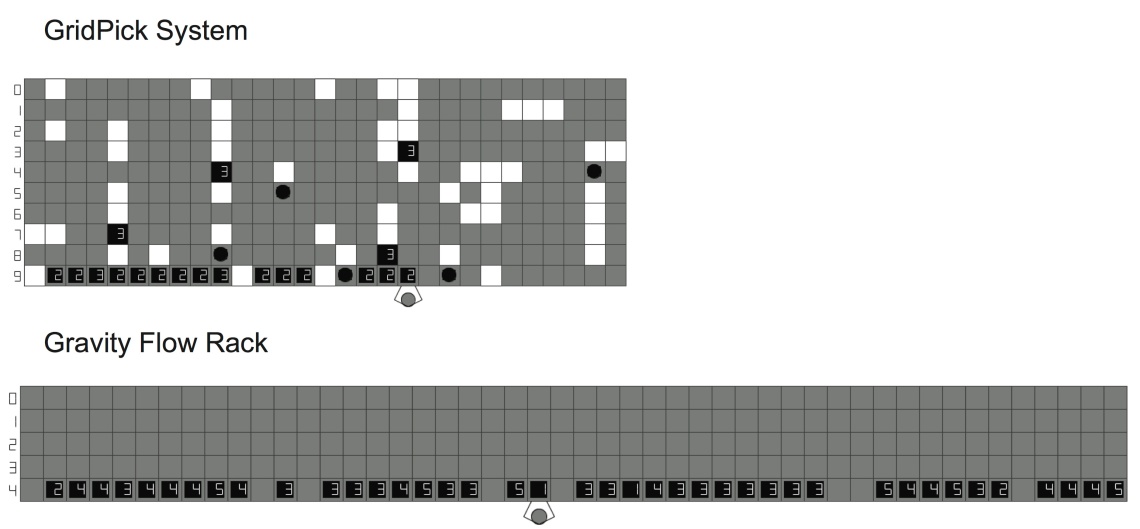GridPick is a new semi-automated order picking concept for piece- or carton-picking based on the puzzle-architecture of GridFlow. Instead of receiving cartons from one side and delivering to the other, GridPick moves cartons to and away from the same side—the pick face.
GridFlow is a new approach to the design of “fast pick areas” in distribution centers. In a typical application pallets of a product (or stock keeping unit, “sku”) are kept in a reserve area. Because it is inefficient to pick orders from these pallet locations, a separate fast pick area is created, in which smaller quantities of popular skus are kept. The idea is to increase the “face density” of skus (measured in skus per square foot of pick space, for example), so that workers don’t have to travel as far between picks.

To the right is a flow rack, in which each lane contains a single sku. Lanes are typically 4-5 cartons or totes deep. When the lane is almost empty, a worker replenishes the lane from reserve stock. Flow rack has a face density of one sku per lane.
GridPick increases face density beyond one sku per slot by presenting only needed skus to the pick face, then withdrawing them to make room for upcoming picks. While the worker walks along the pick face picking the current order, items in the next order are making their way to the face in preparation for his next order. Ideally, workers never have to wait for an order not already at the face.
Below is an illustration of how GridPick might compare with an equivalent flow rack. Both systems have 5 pallets each of 48 skus, for a total of 240 pallets. The nature of flow rack obliges a length of 48 slots, whereas this implementation of GridPick (other aspect ratios could be considered) has 29 slots. This is an excellent illustration of GridPick’s higher face density.
The plot below shows how average productivity improves for a worker in a GridPick system. The level of benefit is higher for smaller orders because the ratio of travel time to pick time is greater in this case; because GridPick significantly reduces travel time, it offers more benefit for smaller batches.

I welcome your comments.

Fascinating design…I can see the immediate benefits. I wonder what the impact is in productivity when you batch orders in GridPick vs. batching orders in a conventional design. I am thinking of small cube items (such as cosmetics) in a split case environment that are normally picked in a traditional carton flow setting. The majority of orders are small (1-5 lines) and a group of 5-10 orders are released to the picker who moves down the aisle, picking the 5-10 orders to say, 5-10 different totes on a cart. Many people call this cluster picking.
Keep up the great work!